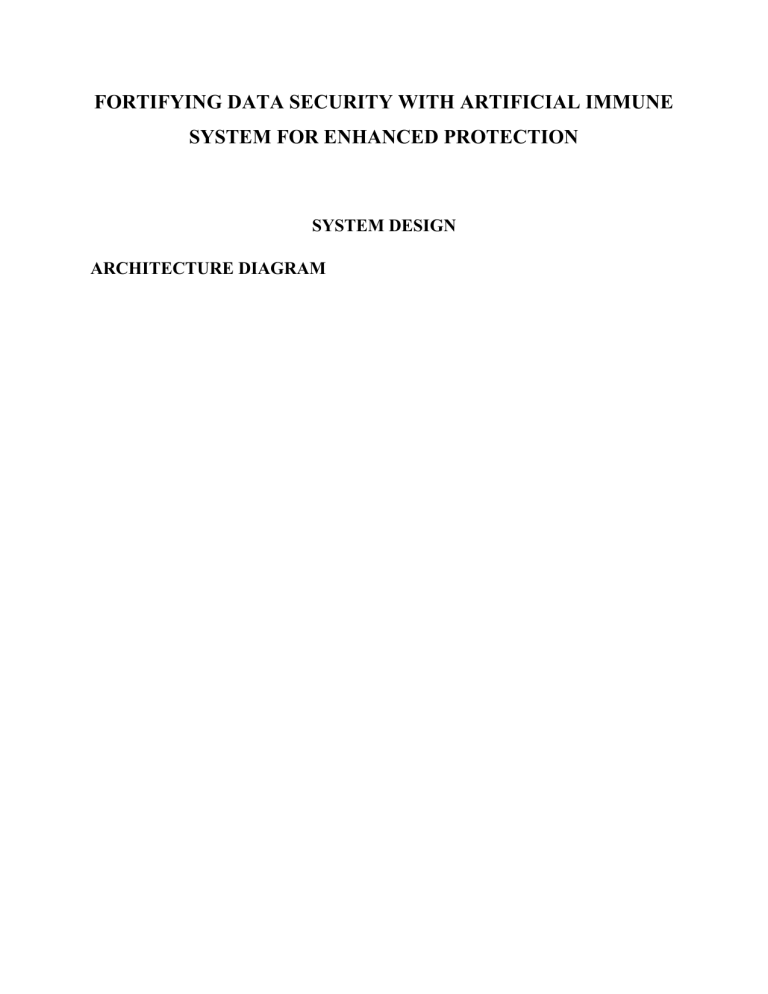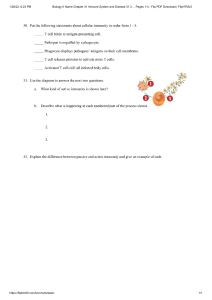
FORTIFYING DATA SECURITY WITH ARTIFICIAL IMMUNE SYSTEM FOR ENHANCED PROTECTION SYSTEM DESIGN ARCHITECTURE DIAGRAM Data System: This component represents the data source, which is preprocessed and encoded before training with a trained encoder. The trained encoder is then used to detect any security threats in the data and respond accordingly. Artificial Immune System: This component represents the AIS controller, which generates antibodies based on the detected security threats. The antibodies are then matched and selected before undergoing mutation to generate new antibodies. Security Management System: This component represents the security management system, which evaluates the generated antibodies to plan and monitor the security of the data system. The system is maintained by taking corrective actions based on the evaluation results. The flowchart layout shows the sequence of actions taken in each component, starting from the data source and ending with the security management system. The arrows between the components indicate the flow of data and actions between the components. CONTENT Data source: The source of the data that needs to be secured, such as a database or a file system. Data pre-processing: The incoming data may need to be pre-processed to remove any irrelevant or sensitive information. Feature extraction: Features are extracted from the pre-processed data to be used in the artificial immune system. Pattern recognition: An artificial immune system identifies patterns in the data that are indicative of malicious activity. This is done by comparing the extracted features to a model of normal behavior, which is built through a process of training. Anomaly detection: If the artificial immune system identifies a pattern that is not consistent with normal behavior, it is flagged as an anomaly. Alert generation: When an anomaly is detected, an alert is generated to notify the relevant parties of a potential security breach. Response system: The response system can take different actions depending on the severity of the detected anomaly. Actions may include blocking access to the data source, quarantining the affected system, or notifying security personnel for further investigation. Learning system: The artificial immune system continually learns from new data to improve its ability to identify and respond to security threats. Reporting system: The system generates reports to provide insights into the security status of the data source and to help identify areas of potential weakness. USE CASE DIAGRAM In this use case diagram, there are two actors: The User who interacts with the system to input and retrieve data, and the Intruder who attempts to breach the system's security. The Data Security System is represented as an oval, and it contains several use cases, including Input Data, Apply AIS Algorithm, Encrypt Data, Decrypt Data. The arrows indicate the flow of interactions between the various use cases and actors. Overall, this diagram shows the main functionalities of a data security system based on artificial immune system. CLASS DIAGRAM The User class has private fields username and password, as well as several public methods related to logging in, logging out, and managing data. The Intruder class has private fields ipAddress and location, as well as public methods related to attempting unauthorized access to the User's data. The AISAlgorithm class has public methods related to preprocessing and applying an algorithm to the User's data. The Data class has private fields encryptedData, decryptedData, and storedLocation, as well as public methods related to storing, retrieving, and managing the encryption of the User's data. SEQUENCE DIAGRAM This sequence diagram shows the following interactions 1. "File Upload", "Artificial Immune System (AIS) Controller", "Encryption", "Decryption", "Intruder", "Logs", and "Security Management System" entities, without including the "Data Source" as a separate participant. The diagram illustrates the flow of messages and activations/deactivations of participants during the execution of various actions such as file upload, threat detection, antibody generation, encryption, decryption, intrusion logging, and corrective actions taken by the Security Management System. ER DIAGRAM This updated ER diagram includes the entities "File Upload", "Encryption", "Decryption", "Intruder", and "Logs" in addition to the previously included entities. The relationships between the entities have been updated to reflect the connections between them. The attributes for each entity are based on the provided content, but can be modified or expanded as needed to accurately represent the system.




